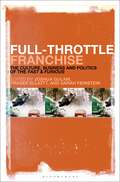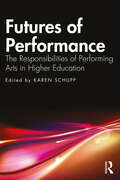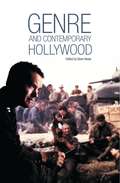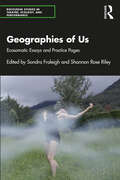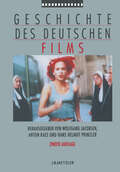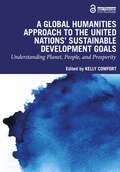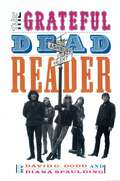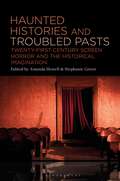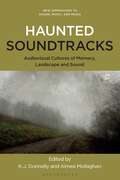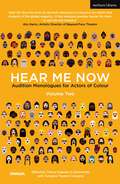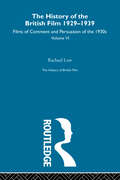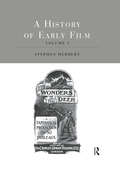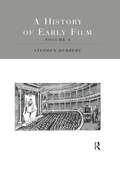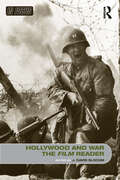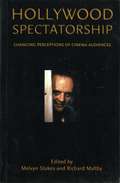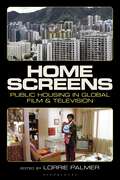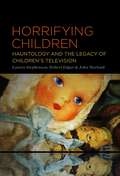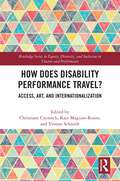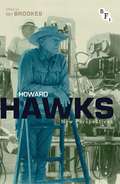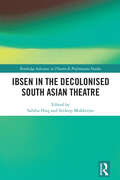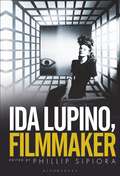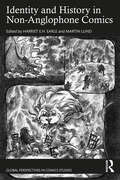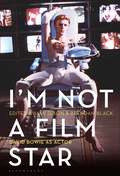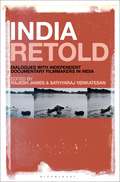- Table View
- List View
Full-Throttle Franchise: The Culture, Business and Politics of Fast & Furious
When the first Fast & Furious film was released in June 2001, few predicted that it would be a box office hit, let alone the launchpad for a multi-billion-dollar franchise. A mid-budget crime movie set around L.A.'s underground car-racing scene, featuring a cast of relative unknowns, the film became one of the surprise hits of that summer, earning more than 5 times its budget in worldwide ticket sales. 2 decades and 9 films later, Fast & Furious today ranks among the 10 highest-grossing movie franchises of all time, with a box office total of $6.6 billion and has also given rise to an animated TV show and theme park ride. Full-Throttle Franchise is the first book to offer an in-depth analysis of the Fast & Furious, bringing together a range of scholars to explore not only the style and themes of the franchise, but also its broader cultural impact and legacy. The collected essays establish the franchise's importance in cinematic and ideological terms, linking their discussions to wider issues of genre, representation, adaptation, and industry. Topics range from stardom and performance, focusing on key actors Vin Diesel and Dwayne Johnson, to the way in which Fast & Furious intersects with dominant ideas of racial, gender, and sexual identity. Aimed at both scholars and fans, Full-Throttle Franchise seeks to uncover just what has made Fast & Furious so enduringly popular, mapping its outrageous set pieces, ever-expanding universe, and growing cast of global megastars in terms of wider cultural and industrial forces.
Futures of Performance: The Responsibilities of Performing Arts in Higher Education
Futures of Performance inspires both current and future artists/academics to reflect on their roles and responsibilities in igniting future-forward thinking and practices for the performing arts in higher education. The book presents a breadth of new perspectives from the disciplines of music, dance, theatre, and mediated performance and from a range of institutional contexts. Chapters from teachers across various contexts of higher education are organized according to the three main areas of responsibilities of performing arts education: to academia, to society, and to the field as a whole. With the intention of illuminating the intricacy of how performing arts are situated and function in higher education, the book addresses key questions including: How are the performing arts valued in higher education? How are programs addressing equity? What responsibilities do performing arts programs have to stakeholders inside and outside of the academy? What are programs’ ethical obligations to students and how are those met? Futures of Performance examines these questions and offers models that can give us some of the potential answers. This is a crucial and timely resource for anyone in a decision-making position within the university performing arts sector, from administrators, to educators, to those in leadership positions.
Genre and Contemporary Hollywood
This wide-ranging text is one of the first to look in detail at some of the principal genres, cycles and trends in Hollywood's output during the last two decades. It includes analysis of such films as Sense and Sensibility, Grifters, The Mask, When Harry Met Sally, Pocahontas, Titanic, Basic Instinct, Coppola's Dracula, and Malcolm X.
Geographies of Us: Ecosomatic Essays and Practice Pages (Routledge Studies in Theatre, Ecology, and Performance)
Geographies of Us: Ecosomatic Essays and Practice Pages is the first edited collection in the field of ecosomatics.With a combination of essays and practice pages that provide a variety of scholarly, creative, and experience-based approaches for readers, the book brings together both established and emergent scholars and artists from many diverse backgrounds and covers work rooted in a dozen countries. The essays engage an array of crucial methodologies and critical/theoretical perspectives, including practice-based research in the arts, especially in performance and dance studies, critical theory, ecocriticism, Indigenous knowledges, material feminist critique, quantum field theory, and new phenomenologies. Practice pages are shorter chapters that provide readers a chance to engage creatively with the ideas presented across the collection. This book offers a multidisciplinary perspective that brings together work in performance as research, phenomenology, and dance/movement; this is one of its significant contributions to the area of ecosomatics.The book will be of interest to anyone curious about matters of embodiment, ecology, and the environment, especially artists and students of dance, performance, and somatic movement education who want to learn about ecosomatics and environmental activists who want to learn more about integrating creativity, the arts, and movement into their work.
Geschichte des deutschen Films
Internationales Standardwerk der Filmgeschichtsschreibung. Von ausgewählten Filmen und ihren Regisseuren bis zum "Autorenfilm" berichtet der Band über alle wichtigen filmgeschichtlichen Epochen. Vorgestellt werden auch die charakteristischen Genres, Ideen, Motive, die politische Dimension des Films und die Rolle des Publikums. Eine Chronik erschließt die Daten zum deutschen Film, eine Bibliografie nennt weiterführende Literatur. Mit zahlreichen Abbildungen von über einhundert Jahren deutscher Filmgeschichte.
A Global Humanities Approach to the United Nations' Sustainable Development Goals: Understanding Planet, People, and Prosperity
This edited textbook explores the 17 UN SDGs through 12 works from the humanities, including films, novels, and photographic collections. It provides students with the knowledge and understanding of how the humanities engage in broader social, political, economic, and environmental dialogue, offering a global perspective that crosses national and continental borders. The book takes students through the UN SDGs from a theoretical perspective through to practical applications, first through specific global humanities examples and then through students’ own final projects and reflections. Centered around three major themes of planet, people, and prosperity, the textbook encourages students to explore and apply the Goals using a place-based, culturally rooted approach while simultaneously acknowledging and understanding their global importance. The text’s examples range from documentary and feature film to photography and literature, including Wang Jiuliang’s Plastic China, Kip Andersen and Keegan Kuhn’s Cowspiracy: The Sustainability Secret, Barbara Dombrowski’s Tropic Ice: Dialog Between Places Affected by Climate Change, and Aravind Adiga’s The White Tiger, among others. Providing diverse geographic and cultural perspectives, the works take readers to Argentina, Australia, China, Costa Rica, Ecuador, France, Greenland, Haiti, India, Japan, Peru, Rwanda, Senegal, and the United States. This broad textbook can be used by students and instructors at undergraduate and postgraduate levels from any subject background, particularly, but not exclusively, those in the humanities. With added discussion questions, research assignments, writing prompts, and creative project ideas, students will gain a nuanced understanding of the interconnectivity between social, cultural, ethical, political, economic, and environmental factors.
The Grateful Dead Reader (Readers on American Musicians)
Arranged in chronological order, these pieces add up to nothing less than a full-scale history of the greatest tour band in the history of rock. From Tom Wolfe's account of the Dead's first performance as the Grateful Dead (at an Acid Test in 1965), to Ralph Gleason's 1967 interview with the 24-year-old Jerry Garcia, to Mary Eisenhart's obituary of the beloved leader of the band, these selections include not only outstanding writing on the band itself, but also superb pieces on music and pop culture generally. Fans will be fascinated by the poetry, fiction, drawings, and rare and revealing photographs featured in the book, as well as the anthology's many interviews and profiles, interpretations of lyrics, and concert and record reviews. Still, The Grateful Dead was more than a band--it was a cultural phenomenon. For three decades it remained on one unending tour, followed everywhere by a small army of nomadic fans. This phenomenon is both analyzed and celebrated here, in such pieces as Ed McClanahan's groundbreaking article in Playboy in 1972, fan-magazine editor Blair Jackson's 1990 essay on the seriousness of the drug situation at Dead concerts, and Steve Silberman's insightful essays on the music and its fans.
Haunted Histories and Troubled Pasts: Twenty-First-Century Screen Horror and the Historical Imagination
Haunted Histories and Troubled Pasts speaks to how a transnational array of recent screen entertainments participate, through horror, in public discourses of history, the social and creative work of reshaping popular understanding of our world through the lens of the past.Contemporary film and television – and popular screen cultures more generally – are distinguished by their many and varied engagements with history, including participation in worldwide movements to reconcile past losses and injuries with present legacies. The chapters in this collection address themselves to 21st-century screen horror's participation in this widespread fascination with and concern for the historical - its recurrent reimagining of the relation between the past and present, which is part of its inheritance from the Gothic. They are concerned with the historical work of horror's spectral occupations, its visceral threats of violence and its capacity for exploring repressed social identities, as well as the ruptures and impositions of colonization and nationhood.Trauma is a key theme in this book, examined through themes of war and genocide, ghostly invasions, institutionalized abuse, apocalyptic threat and environmental destruction. These persistent, fearful reimaginings of the past can take many lurid – sometimes tritely generic – forms. Together, these chapters explore and reflect upon horror's ability to speak through them to the unspoken of history, to push the boundaries and probe the fault-lines and ideological impositions of received historical narratives – while reminding us that history and the historical imagination persist as sites of contention.
Haunted Soundtracks: Audiovisual Cultures of Memory, Landscape, and Sound (New Approaches to Sound, Music, and Media)
The turn of the millennium has heralded an outgrowth of culture that demonstrates an awareness of the ephemeral nature of history and the complexity underpinning the relationship between location and the past. This has been especially apparent in the shifting relationship between landscape, memory and sound in film, television and other media. The result is growing interest in soundtracks, as part of audiovisual culture, as well as an interest in the spectral aspects of culture more generally. This collection of essays focuses on audiovisual forms that foreground landscape, sound and memory. The scope of inquiry emphasises the ghostly qualities of a certain body of soundtracks, extending beyond merely the idea of 'scary films' or 'haunted houses.' Rather, the notion of sonic haunting is tied to ideas of trauma, anxiety or nostalgia associated with spatial and temporal dislocation in contemporary society. Touchstones for the approach are the concepts of psychogeography and hauntology, pervasive and established critical strategies that are interrogated and refined in relation to the reification of the spectral within the soundtracks under consideration here.
Hear Me Now, Volume Two: Audition Monologues for Actors of Colour (Audition Speeches)
Hear Me Now, Volume Two is a unique collection of over 80 original audition monologues, expressly created by a range of writers including Vera Chok, Josh-Susan Enright and Bea Webster, brought together by producer Titilola Dawudu and Tamasha Theatre Company. They are ideal for actors of colour searching for speeches for auditions or training, writers, teachers, and theatre-makers who are passionate about improving diversity.The volume is introduced by BAFTA-nominated actor Ashley Madekwe, and will also feature a section on Top Tips for auditioning from Tamasha Theatre and a host of actors, including Ted Lasso's Kevin 'KG' Garry and Cherrelle Skeete of Harry Potter and the Cursed Child.Following on from the successful first volume, and featuring a variety of themes, scenes and characters, Hear Me Now, Volume Two is an essential tool for actors of colour to showcase their range, and seeks to inspire, empower, and create a legacy for generations to come.
The History of British Film (Volume 6): The History of the British Film 1929 - 1939: Films of Comment and Persuasion of the 1930's
This set is one of the cornerstones of film scholarship, and one of the most important works on twentieth century British culture. Published between 1948 and 1985, the volumes document all aspects of film making in Britain from its origins in 1896 to 1939.Rachael Low pioneered the interpretation of films in their context, arguing that to understand films it was necessary to establish their context. Her seven volumes are an object lesson in meticulous research, lucid analysis and accessible style, and have become the benchmark in film history.
A History of Early Film V1
Volume 1 of A History of Early Film begins with the period of technical invention. The story of Edison's peepshow Kinetoscope, set up in arcades from April 1894, is told by W. K. L. Dickson. 'Lantern Projection of Moving Objects' heralds the arival of the first screenings in Britain, arranged by Auguste and Louis Lumière, Robert Paul and Birt Acres, announcing the new medium as a progressive development of optical moving-image toys, magic lantern projection and the Kinetoscope. It includes an evocative selection of advertisements for the earliest films and cinematographic apparatus of 1896-7. The last part of the volume covers 1901-6 as the medium of cinema developed.
A History of Early Film V3
Volume 3 of A History of Early Film examines critical responses to early cinema, including the impassioned thoughts of one of the first film critics, the American poet Vachel Lindsay and considers some contemporary judgements of the social aspects of moving pictures. The volume also includes the 1917 report The Cinema: Its Present Position and Future Possibilities...which provides a unique record of the attitudes towards the cinema by its British audiences exhibitors, producers, guardians of morality and those responsible for licensing.
Hollywood and War, The Film Reader
Discussing such classic films as Sergeant York, Air Force, and All Quiet on the Western Front, as well as more modern blockbusters like Apocalypse Now and Saving Private Ryan, this outstanding volume focuses on Hollywood and its production of war films.Topics covered include:the early formation of war cinemathe apotheosis of the Hollywood war filmthe ascendancy of ambivalenceHollywood and the war since Vietnamwar as a way of seeing. For any student of film studies or American cultural studies, this is a valuable companion.
Hollywood Spectatorship: Changing Perceptions of Cinema Audiences
This is an examination of the concepts of spectatorship in the light of historical accounts of audience reception. The book looks at how audiences have historically talked about Hollywood movies, and the ways in which 'word-of-mouth' responses have affected the reception of individual movies.
Home Screens: Public Housing in Global Film & Television
How do film and television makers around the world depict public housing? Why is public housing so often chosen as the backdrop for drama, horror, social critique, rebellion, violence, artistic creativity, explorations of race relations and political intrigue?Home Screens answers these questions by examining the ways in which socialized housing projects around the world are represented on screen. The volume brings together a diverse group of interdisciplinary scholars, who explore documentary and fictional portrayals of the architecture of public housing, and the communities that inhabit it, ranging from the 1950s to the present. Examining international film and media texts such as Die Architekten (1990), Swagger (2016), Cooley High (1975), Mee-Pok Man (1995), Treme (2010–2013), Mamma Roma (1962), The Pruitt-Igoe Myth (2011), and Below the Lion Rock (1972–1976), essays within this book consider public and private attitudes toward socialised housing, explaining how onscreen representations shape perceptions of these ubiquitous, often-stigmatized urban locations.
Horrifying Children: Hauntology and the Legacy of Children’s Television
Horrifying Children examines weird and eerie children's television and literature via critical analysis, memoir and autoethnography.There has been an explosion of interest in the impact of children's television and literature of the late twentieth century. In particular, the 1970s, '80s and '90s are seen as decades that shaped a great deal of the contemporary cultural landscape. Television of this period dominated the world of childhood entertainment, drawing freely upon literature and popular culture, like the Garbage Pail Kids and Stranger Things, and much of it continues to resonate powerfully with the generation of cultural producers (fiction writers, screenwriters, directors, musicians and artists) that grew up watching the weird, the eerie and the horrific: the essence of 21st-century Hauntology. In these terms this book is not about children's television as it exists now, but rather as it features as a facet of memory in the 21st century. As such it is the legacy of these television programmes that is at the core of Horrifying Children. The 'haunting' of adults by what we have seen on the screen is crucial to the study. This collection directly addresses that which 'scared us' in the past insomuch as there is a correlation between individual and collective cultural memory, with some chapters providing an opportunity for situating existing explorations and understandings of Gothic and Horror TV within a hauntological and experiential framework.
Horror That Haunts Us: Nostalgia, Revisionism, and Trauma in Contemporary American Horror Film and Television
Horror’s pleasures fundamentally hinge on looking backward, either on destabilising trauma, or as a period of comfort and happiness which is undermined by threat. However, this stretches beyond the scares on our screens to the consumption and criticism of the monsters of our past. The horror films of our youth can be locations of psychological and social trauma, or the happy place we go back to for comfort when our lives become unsettled. Horror That Haunts Us: Nostalgia, Revisionism, and Trauma in Contemporary American Horror is a collection of essays that brings together multiple theoretical and critical approaches to consider the way popular horror films from the last fifty years communicate, embody, and rework our view of the past. Whether we look at our current relationship to the scary movies of decades ago as personal or cultural memory, the way historical and sociopolitical events and frameworks – especially traumas – reframe the way we look at our pasts, or even the way recent horror films and video games look back at our past (and the past of the genre itself) through a filter of experience and history, this collection will show the close relationship between nostalgia and popular horror. These essays also demonstrate a range of unique and diverse points of view from both established and emerging scholars on the subject of horror and the past. Edited by seasoned horror experts Karrá Shimabukuro and Wickham Clayton, Horror That Haunts Us is a book with the aim of examining why we return again and again to certain popular horror films, either as remakes or reboots or as the basis for pastiche and homage.
How Does Disability Performance Travel?: Access, Art, and Internationalization (Routledge Series in Equity, Diversity, and Inclusion in Theatre and Performance)
This edited collection investigates the myriad ways in which disability performance travels in a globalized world. Disability arts festivals are growing in different parts of the world; theatre and dance companies with disabled artists are increasingly touring and collaborating with international partners. At the same time, theatre spaces are often not accessible, and the necessity of mobility excludes some disabled artists from being part of an international disability arts community. How does disability performance travel, who does not travel – and why? What is the role of funding and producing structures, disability arts festivals and networks around the world? How do the logics of international (co-)producing govern the way in which disability art is represented internationally? Who is excluded from being part of a touring theatre or dance company, and how can festivals, conferences, and other agents of a growing disability culture create other forms of participation, which are not limited to physical co-presence? This study will contextualize disability aesthetics, arts, media, and culture in a global frame, yet firmly rooted in its smaller national, state, and local community settings and will be of great interest to students and scholars in the field.
Howard Hawks: New Perspectives
Leading international scholars consider the films and legacy of Howard Hawks. Diverse contributions consider Hawks' work in relation to issues of gender, genre and relationships between the sexes, discuss key films including Rio Bravo, The Big Sleep and Red River, and address Hawks' visual style and the importance of musicality in his film-making.
Ibsen in the Decolonised South Asian Theatre (Routledge Advances in Theatre & Performance Studies)
This book maps South Asian theatre productions that have contextualised Ibsen’s plays to underscore the emergent challenges of postcolonial nation formation. The concerns addressed in this collection include politico-cultural engagements with human rights, economic and environmental issues, and globalisation, all of which have evolved through colonial times and thereafter. This book contemplates why and how these Ibsen texts were repeatedly adapted for the stage and consequently reflects upon the political intent of this appropriative journey of the foreign playwright. This book tracks the unmapped agency that South Asian theatre has acquired through aesthetic appropriation of Ibsen and thereby contributes to his global reception. This collection will be of great interest to students and scholars of theatre and performance studies.
Ida Lupino, Filmmaker
Ida Lupino, Filmmaker begins with an exploration of biographical studies and analytical treatments of Lupino's film and television work as director, moving forward to assess Lupino's career in film and television with particular attention given to Lupino's singular, pioneering achievements and her role(s) within the cultural milieu(s) of her time, particularly the representation of women in cinema. Each chapter includes a close analysis of the film or television work with insights drawn from film history and cultural/gender studies to demonstrate that Lupino was a significant directorial figure in the development of film, especially in the late 1940s and early 1950s-and in television extending well into the 1960s. Lupino left her imprint on filmmaking and her canon of film and television work continue to influence Hollywood movie making.The contributors to this volume assess Lupino's main strengths as a filmmaker-her treatment of narrative movement, plotting, dialogue, gender roles, and uses of tradition representations of men and women in frames of parody and satire. The book collectively examines the successes (and failures) of Lupino's directorial career, including focusing on the reasons why she initially proved to be so strategic to the progress of women behind the camera.
Identity and History in Non-Anglophone Comics (Global Perspectives in Comics Studies)
This book explores the historical and cultural significance of comics in languages other than English, examining the geographic and linguistic spheres which these comics inhabit and their contributions to comic studies and academia. The volume brings together texts across a wide range of genres, styles, and geographic locations, including the Netherlands, Colombia, Greece, Mexico, Poland, Finland, Portugal, Ireland, and the Czech Republic, among others. These works have remained out of reach for speakers of languages other than the original and do not receive the scholarly attention they deserve due to their lack of English translations. This book highlights the richness and diversity these works add to the corpus of comic art and comic studies that Anglophone comics scholars can access to broaden the collective perspective of the field and forge links across regions, genres, and comic traditions. Part of the Global Perspectives in Comics Studies series, this volume spans continents and languages. It will be of interest to researchers and students of comics studies, literature, cultural studies, popular culture, art and design, illustration, history, film studies, and sociology.
I’m Not a Film Star: David Bowie as Actor
The first collection dedicated to David Bowie's acting career shows that his film characterisations and performance styles shift and reform as decoratively as his musical personas. Though he was described as the most influential pop artis of the 20th century, whose work became synonymous with mask, mystery, sexual excess and ch-ch-ch-changing genres, Bowie also applied his genius to the craft of acting.Bowie's considerable filmography is systematically examined in 12 scholarly essays that include tributes to Bowie's performance craft in other media forms. Classic films such as The Prestige and Merry Christmas, Mr. Lawrence, cult hits Labyrinth and The Man Who Fell To Earth, as well as lesser-known roles in The Image, Christiane F. and Broadway hit The Elephant Man are viewed, not simply through the lens of Bowie's mega-stardom, but as the work of a serious actor with inimitable talent. This compelling analysis celebrates the risk-taking intelligence and bravura of David Bowie: actor, mime, mimic and icon.
India Retold: Dialogues with Independent Documentary Filmmakers in India
India Retold: Dialogues with Independent Documentary Filmmakers in India is an attempt to situate and historicize the engagement of independent documentary filmmakers with the postcolonial India and its discourses with a focus on their independent documentary practices. Structured as an interview collection, the book examines how these documentary filmmakers, though not a homogeneous category, practice their independence through their ideology, their filmmaking praxis, their engagement with the everyday and their formal experiments. As a sparsely studied filmmakers, the book through meticulously tracing a wide ranging historical transitions (often marked by communal conflicts and the forces of globalization) not only details the ways in which independent filmmakers in India address the questions of postcolonial nation and its modernist projects but also explores their idiosyncratic views of these filmmakers which are characterized by a definitive departure from the logic of commercial films or state-sponsored documentary films. More important in many ways, these documentary filmmakers expose incongruences in national institutions and programs, embrace the voice of the underrepresented, and thus, imagine an alternative vision of the nation. During the last three years of the execution of the project, thirty Indian documentary filmmakers are interviewed in this book. Given the dearth of quality interviews and little theoretical engagement with documentary as a genre, this book would not only fill in the gap in scholarship but also would serve as an authentic guide for interested readers and for documentary filmmakers alike.
